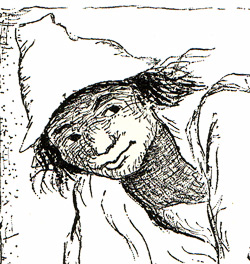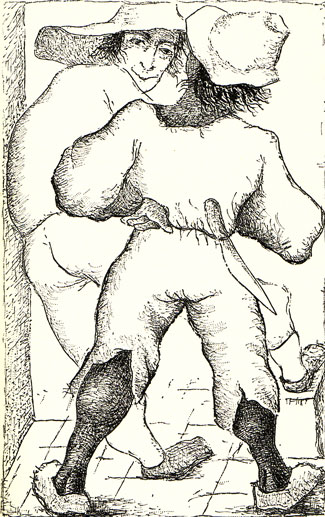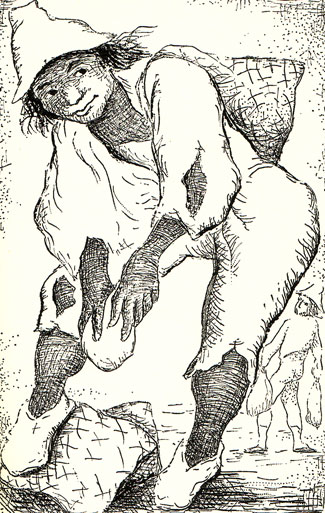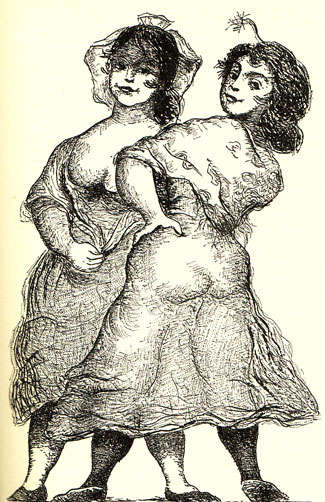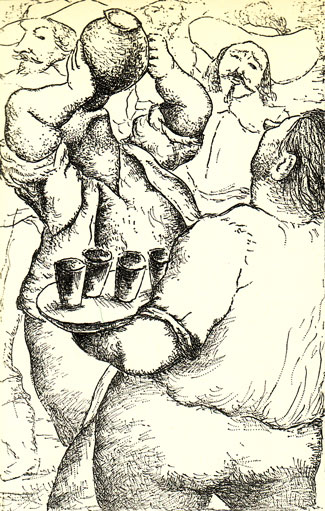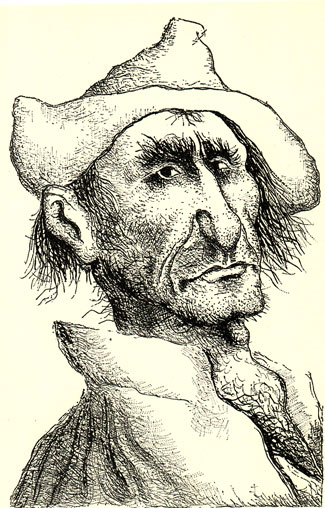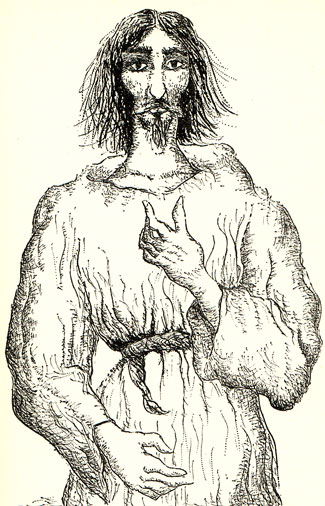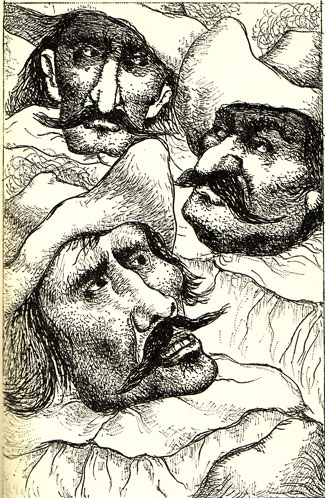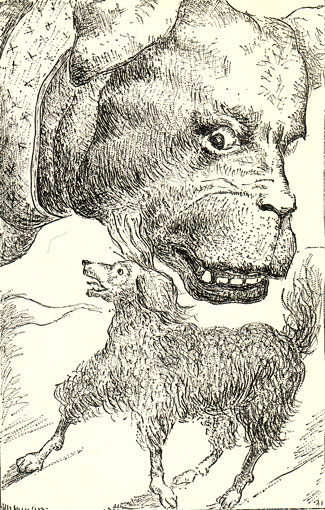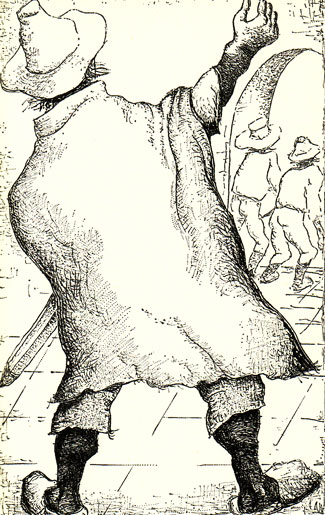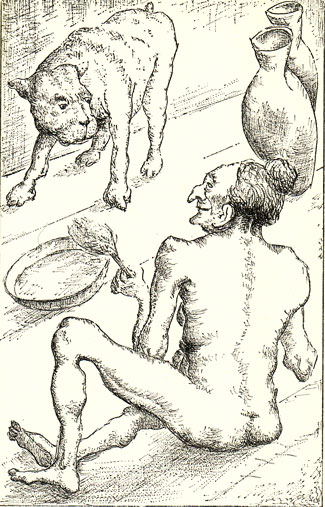In 1950 a new translation of Cervantes' short novels (translated by Samuel Putnam), was published in New York by Viking Press. Titled Three Exemplary Novels the volume included "Rinconete and Cortadillo," "Man of Glass," and "The Colloquy of the Dogs" as well as twenty-four illustrations created as prints by Quintanilla. The first edition was limited to 3000 copies.
To make the prints, Quintanilla derived his own process which allowed him to draw his images directly onto coated translucent cellophane sheets. This provided a drawing surface much closer to paper than drawing in a ground covered plate in the manner that is traditionally used in etching. Then by passing light through the cellophane onto a zinc plate covered with a photosensitive emulsion, he could transfer the image to the plate. Finally, by means of an application of acid, the image was etched onto the plate from which the impressions would be printed. Like photographic negatives, the blacks and whites on the cellophanes are reversed, but when printed regain their original orientation.
According to the editors of Gulliver's Travels, this printmaking process is "in the tradition of Blake" and qualifies the prints as "authentic originals" -- a designation not accepted by this catalogue raisonné. This same process was also used to create Quintanilla's illustrations for Cervantes' Three Exemplary Novels, Poe's "The Raven" and "The Bells" as well as for Gulliver's Travels. (For a more complete explanation of why these illustrations are not included in the catalogue raisonné proper, click here.)
